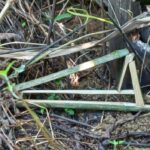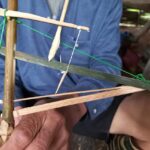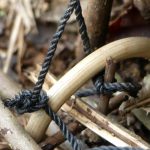Deadfall traps with a Figure-4 trigger are essential knowledge for survivalists and bushcrafters worldwide. Thái Đen (Black Thai) tribal people at Pù Luông Nature Reserve in Northern Vietnam use these traps and the Figure-4 trigger in a modified version. Modifications include the type of deadfall weight, the trigger material, and the trigger design itself.
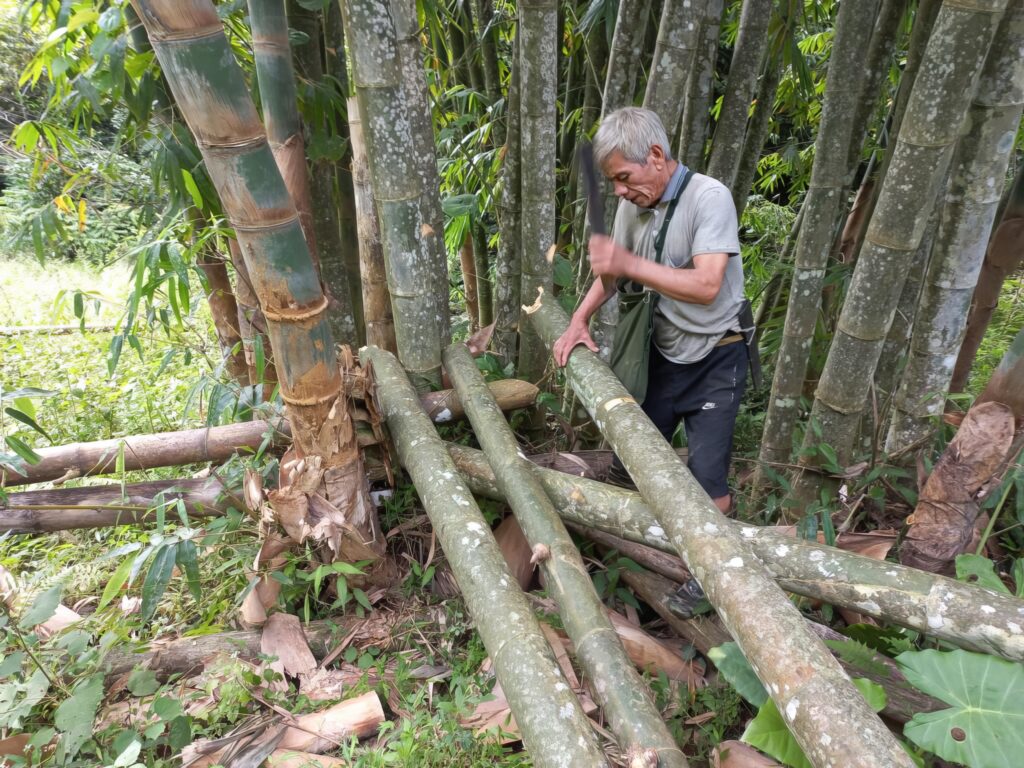
Target animals
Two species of rats are the target animals for this deadfall trap. One is called Chuột rừng, or Sikkim rat in English (Rattus andamanensis). The other is called Chuột cống, or Field rat (Rattus rattus). The Sikkim rat is brownish on the upper side with a white belly and weighs up to 700g / 25oz. The Field rat is greyish with a white belly.
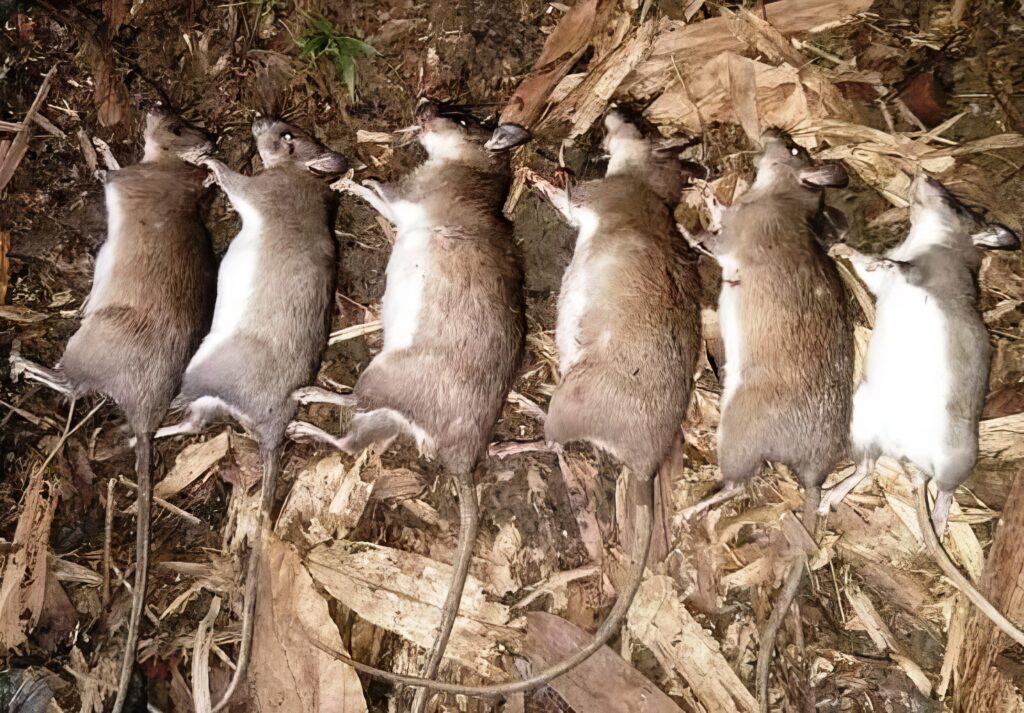
Both rat species live in underground burrows, underneath bushes, or in hollow trees in the wild. They only eat plants, wild fruits, mushrooms, roots, tubers, and tree bark. Their meat is, therefore, considered clean and well-liked by the local population. 100g of rat meat has 23.6% protein, 1% lipids, 0.1% carbohydrates, 30% calcium, 242 mg phosphorus, and vitamins B and others.
Materials used for bamboo deadfall traps
The Thái Đen hunter with whom we built a close friendship lived in an extremely simple hut on a mountain meadow. This meadow was high above Ban Son village in Pù Luông Nature Reserve and was isolated and remote.
The hunter lived by catching frogs, reptiles, small mammals, and birds. He also collected wild honey, bamboo shoots, and edible fruits or greenery. When we first met him, he was preparing for a week-long rat-hunting trip in the mountains. For that trip, he carved 200 sets of Figure-4 triggers.
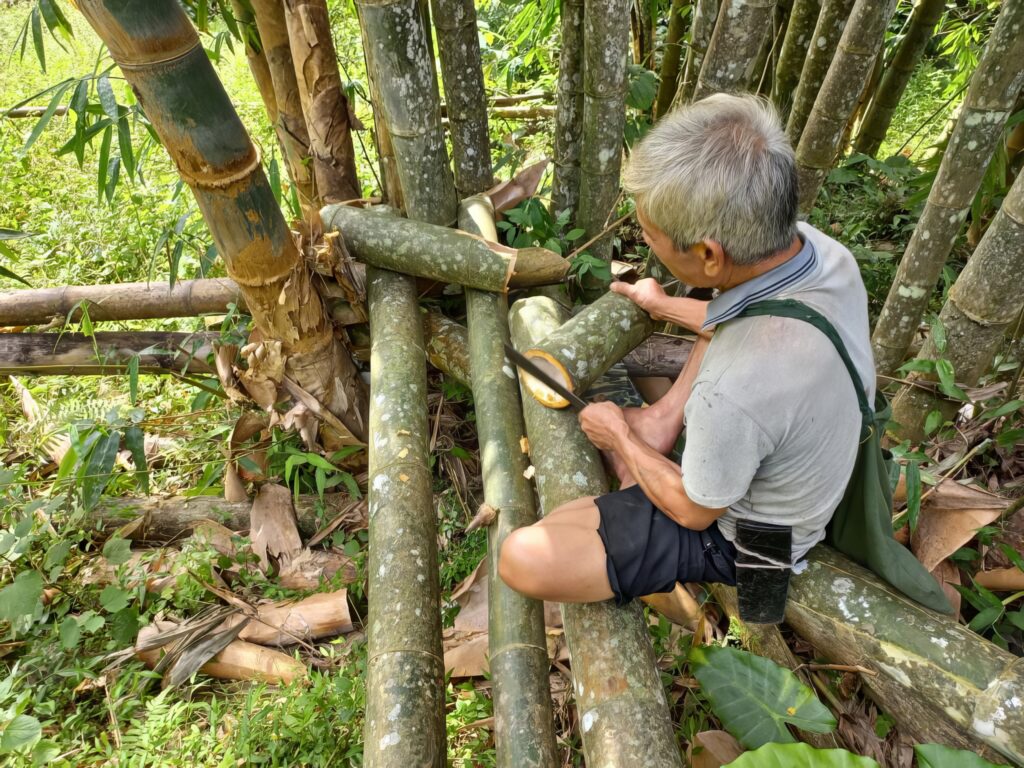
First, he cut down a massive culm of Giant Bamboo (Dendrocalamus giganteus). After that, he cut the culm into about 30cm / 1ft long pieces of bamboo pipes. These pipe-like sections were split into 3cm / 1 3/16’’ wide pieces of bamboo splints.
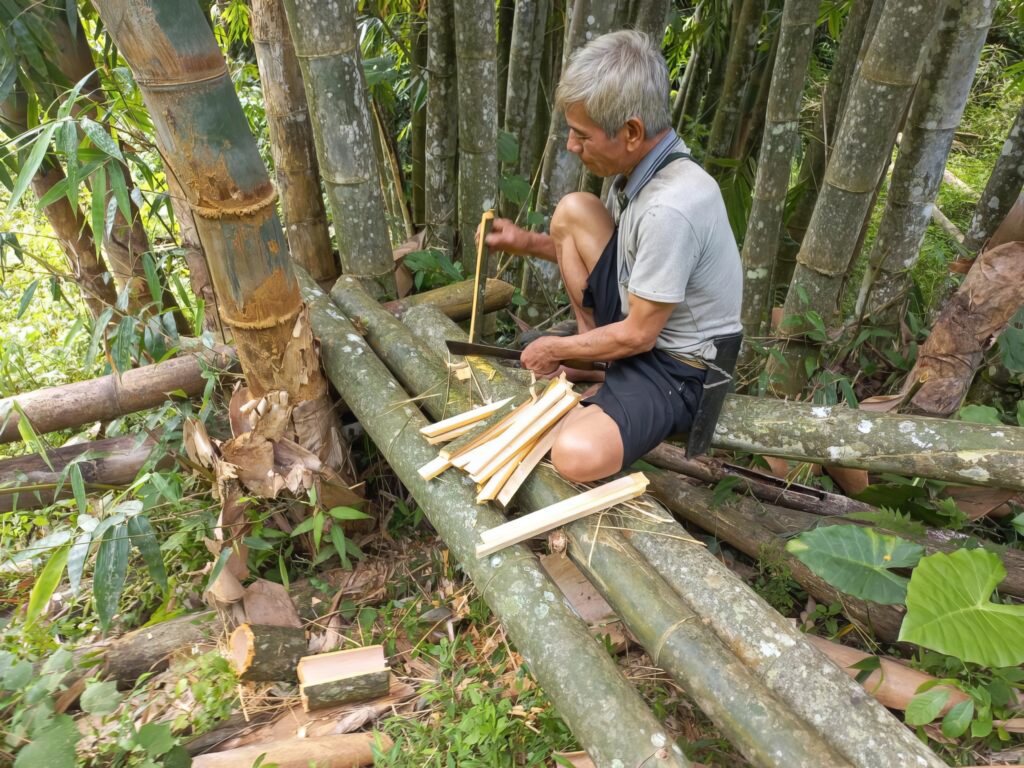
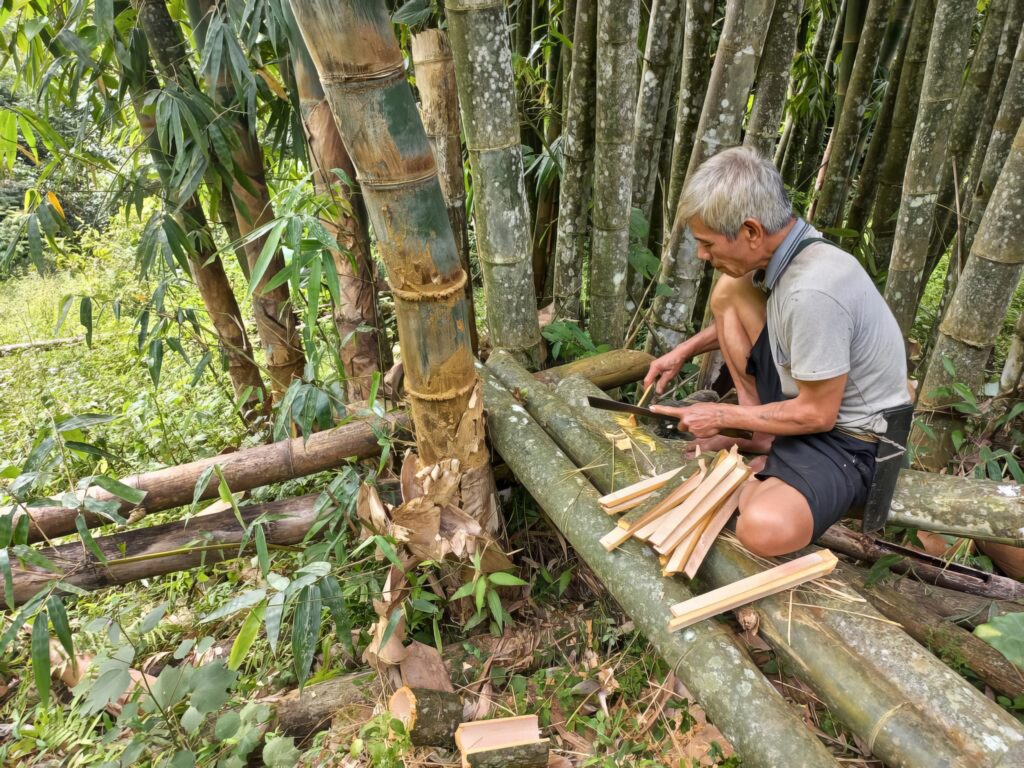
These splints were then carved to the required shape for Figure-4 triggers, so the trigger’s materials were bamboo splints.
While preparing the splints, we had to sit above the ground, as the ground was swarming with leeches. Leech infestation was so bad that we saw these parasites everywhere we looked on the ground.
Material for the deadfall, which the hunter erected in the mountain meadow, was flat, round, and 12cm / 5’’ thick hardwood sections. For his upcoming rat-hunting expedition, he planned to use flat field stones.
Two thumb-thick wooden sticks were also laid on the ground underneath the deadfall. They ensured the rats were crushed between the falling weight and the ground floor.
Design of old-styled, conventional Figure-4 trigger deadfall traps
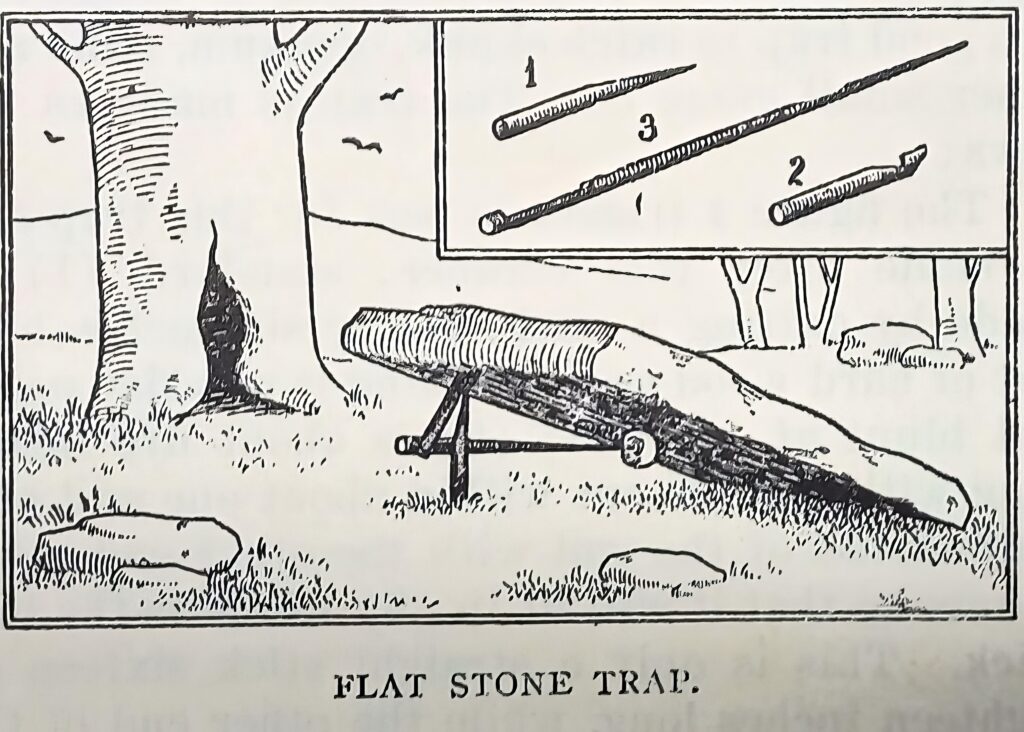
Conventional Figure-4 triggers have been in use for a long time. They consist of three sticks, which have to be carved elaborately. The weighted stick rests on the prop and exercises a tensional force on the bait stick. The bait stick, therefore, needs a counter latching on the prop, which is turned by 90 degrees compared to the pulling notch. Figure 4 of such a conventional trigger faces the outside area, away from the deadfall weight.
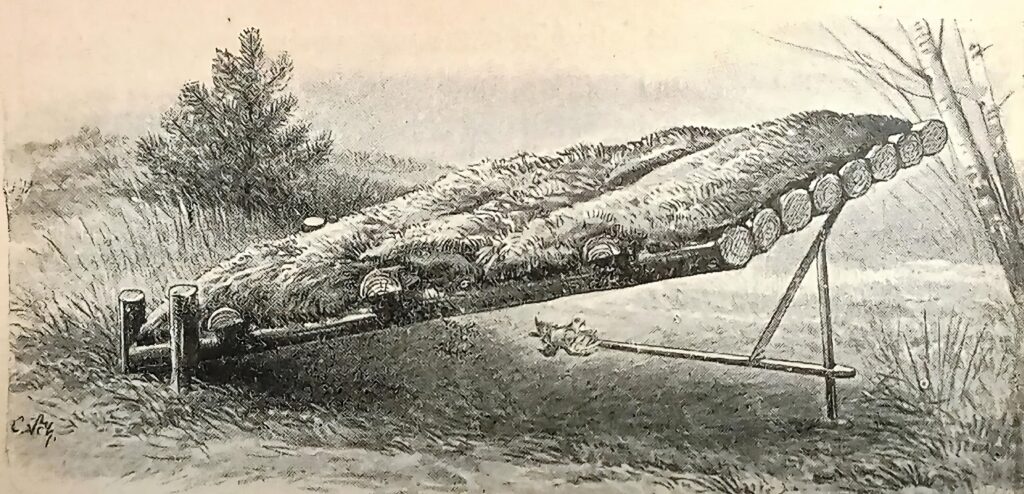
At the so-called ‘Student mousetrap’ in Central Europe in the 19th century, Figure-4 traps were used with the weighted stick pointed to the inside of the trap. It put tension on the bait stick so that this stick also had a latching notch at its opposite end.
Design of the modified Vietnamese Figure-4 trigger deadfall trap

The modified Vietnamese Figure-4 trigger acts so that the weighted stick pushes the bait stick toward the prop. Elaborate carvings are, therefore, not necessary. This design is by far simpler than the conventional design. Figure 4 of such a modified trigger faces the inside area of the deadfall weight.
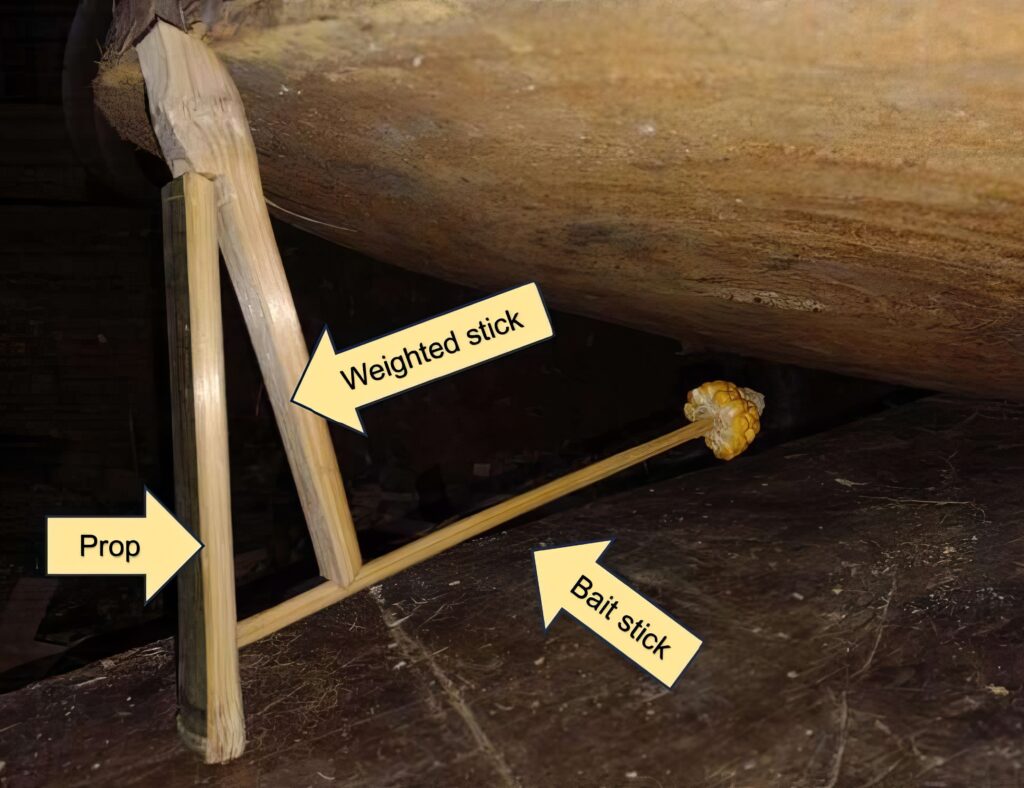
The dimensions of the bamboo pieces are as follows: The prop is 16cm / 6 ¼’’ long and 2.5 cm / 1‘’ wide, which are the exact dimensions of the weighted stick. The bait stick is 23cm / 9’’ long and 7mm / ¼’’ in diameter.

For testing purposes, we turned around the prop (green side inside), and the modified Figure-4 trigger worked the same way as when the green side of the prop faced outward.
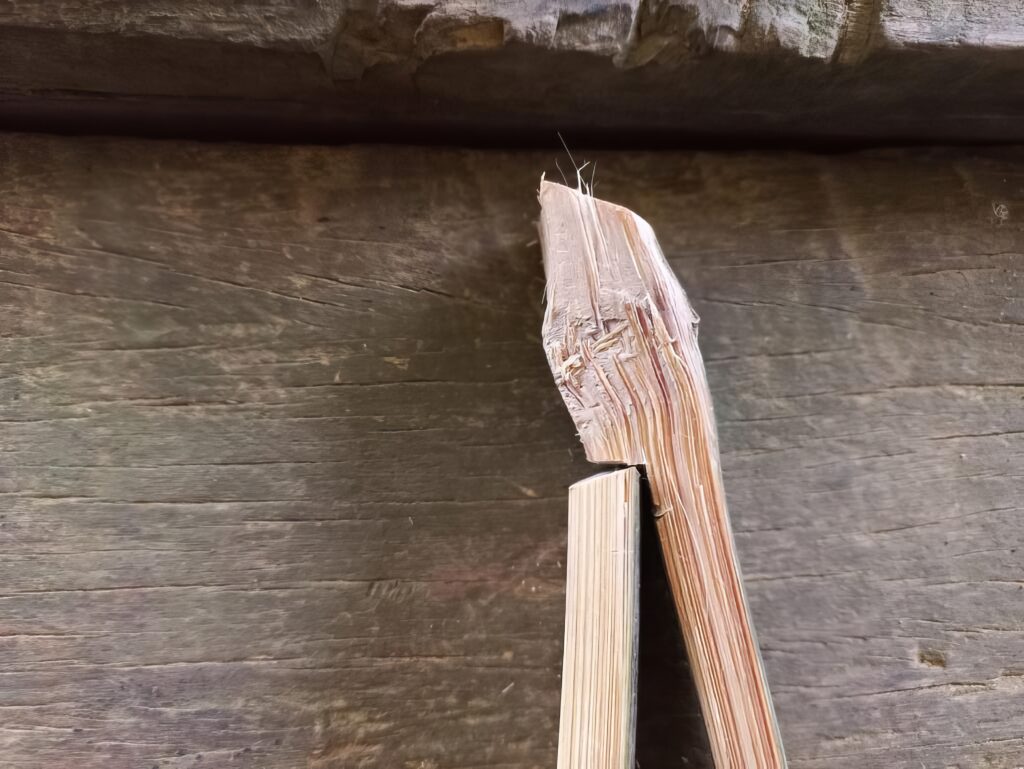

For this design, only two notches are necessary—one at the weighted stick and one at the bait stick. The prop must have a 30-degree angled upper part with a broken edge. The weighted stick needs a 45-degree angle to catch the bait stick. All these simple cuts can be done with a rough machete.
Catching locations


Before setting up the deadfall trap, the hunter must find where rats like to venture about. Rats like to run next to walls or edges, where one side protects them from predators. These are, for example, Giant Bamboo stems on the ground. And they also follow their scent trail. Rats do not venture further than 100m from their nest. They often only feed in an area within a 30 m radius. If a likely location, holding rats, was found, the deadfall should be hidden and slightly covered with vegetation.
The preferred bait for rats is a 2.5 cm / 1’’ thick piece of dried corn. After setting up the trap, two thumb-sized sticks should be laid to the left and right of the bait. These sticks will ensure that the rat is crushed between the falling weight and the—often soggy—ground.
In the northern parts of Vietnam, wintertime is between November and March, and rats’ daily activity slows considerably. At this season, traps only have to be checked by the hunter every second day. However, activity is the highest in autumn, and the deadfalls must be inspected in the mornings and evenings.
Field rats for food

In our case, we had good luck, and that was one of the Field rats we were catching.
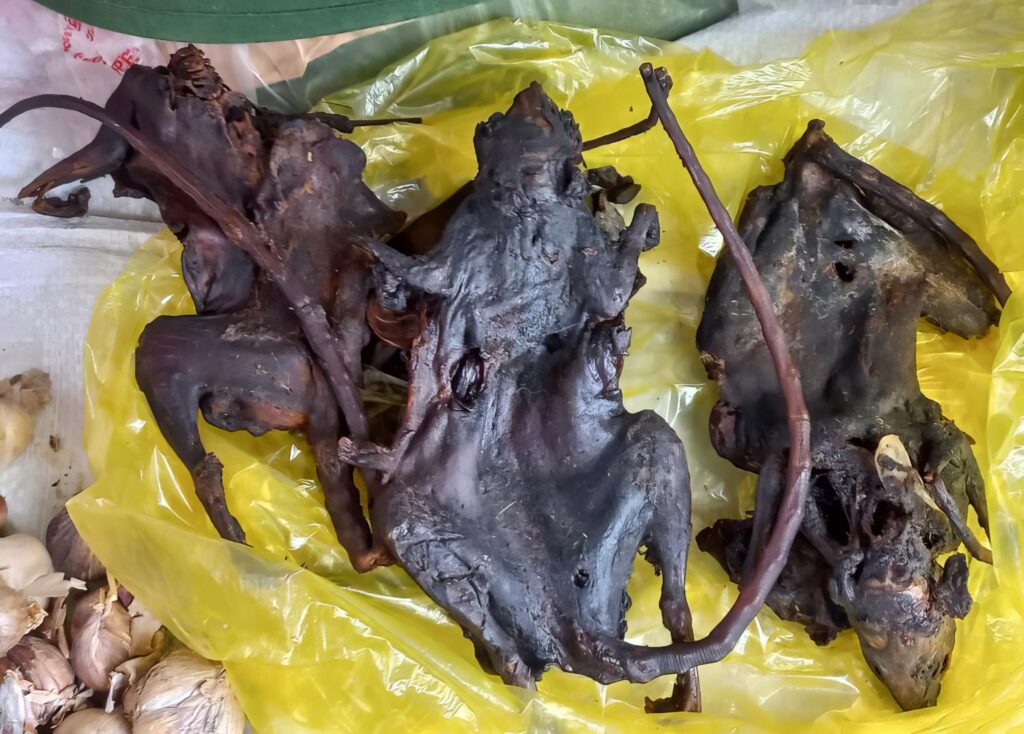
Our hunter preferred to barbeque two rats for himself. He preserved all the other rats by smoking. Later, he sent them down to the village wet market and received cigarettes and batteries for his headlamp.
Lessons learned from Deadfall Traps of the Thái Đen tribe:
- Figure-4 Deadfall traps are widely used for catching rats in Northern Vietnam.
- With bamboo, a modified Figure-4 trap can be easily made.
- Bets bait for rats in the wild are sections of dried corn cobs.
- Deadfall traps for rats should be erected next to linear structures, along which rats preferably run.
Further readings about Hunting of Rodents on this website:
Scissor Traps of Thái Đen tribals in Vietnam
Bow Traps of Thái Đen tribals in Vietnam
Dormouse trapping in southern Slovenia
.



